Section 1 Subsystems
Memory -
Memory performance is very important on a motherboard, especially when you have a CPU with multiple cores and threads. If you have slow memory your cores and threads can become starved for data to execute. To test memory performance we run both Sisoft’s SANDRA and AIDA64. These two combine to not only give us accurate numbers but to validate each other. For testing at stock speeds the memory is hard set to 1333MHz while overclocking testing is done at the highest stable speed for the voltage of 1.65v this is due to the different memory dividers for each CPU. As such, the memory speeds will vary greatly. This means that the overclocked numbers are a little misleading and while they can show a trend are really only included to show if a board has a problem with memory performance at high clockspeeds.
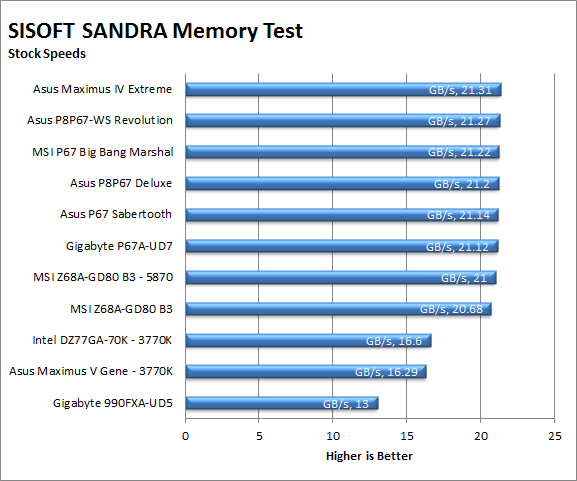
As we noted in other reviews the memory bandwidth with Ivy Bridge is not like what we saw with Sandy Bridge; it is simply lower. However, between different motherboards you should still see differences. On the Asus Maximus V Gene we see that the memory performance was a little slower than the Intel DZ77GA-70K. The difference was not major and would not be noticeable unless you ran a test like this, but we have to wonder about the performance as we would have normally expected Asus to be out in front.
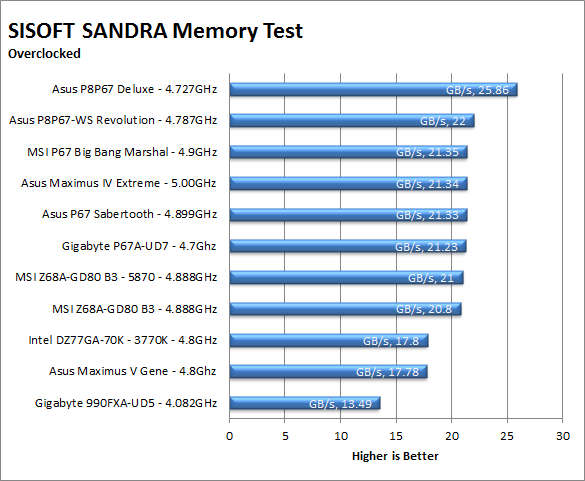
Drive performance -
Drive performance is also one of the major subsystems that goes to make up the performance of a motherboard. For our testing we use Sandra and AIDA64 again. We only test with single drives for each type of controller present on the motherboard (unless it is a professional product where we will use RIAD 5 and/or 10). We have also begun using a Seagate PS-110 USB 3 external HDD and a Kingston HyperX USB 3.0 Flash drive for our USB 3.0 performance. As a side note, we include the overclocked numbers here to make sure (again) that you are not going to see a major drop in performance due to minor instabilities at high clock speeds.
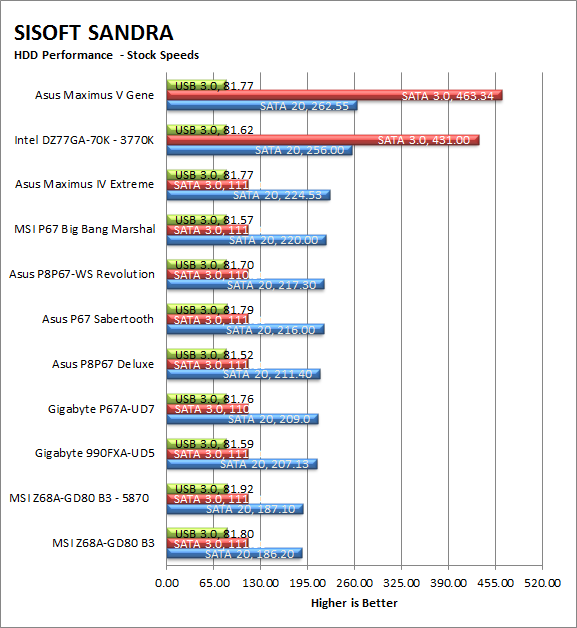
The drive performance on the Maximus V Gene was good. In fact it was good enough to put it at the top of the group for both stock and overclocked performance. This was both SATA 2.0 and SATA 3.0 performance. For USB 3.0 speeds the Asus Maximus with the ASMeida USB 3.0 controller and the Intel controller does a great job. Even running your USB 3.0 flash drives at normal speeds is very fast (as fast as many SATA 2.0 SSDs). In turbo mode we saw speeds of upwards of 280MB/s. The new USB 3.0 Boost really does work. We will be covering this feature across a few of Asus’ motherboards in a later article. The drive speed will be a benefit later on in many of our other tests.
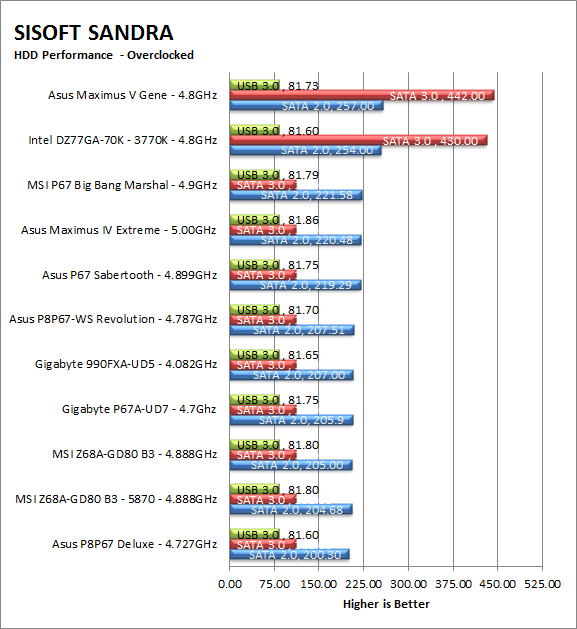
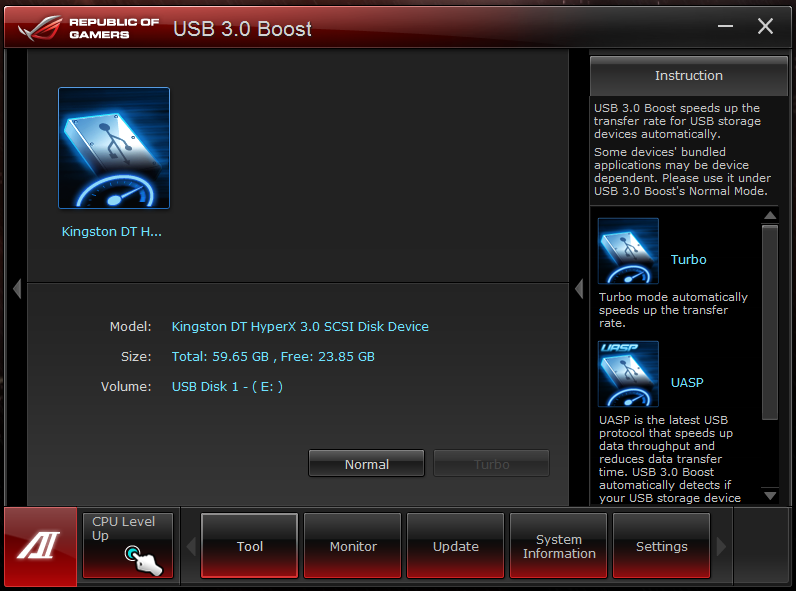
Power -
Power efficiency is another of those misnomers that we get caught up in. We hear about idle states and power gates. But what does that mean to you and I? On the surface having power management that reduces idle power sounds great and can be a benefit to someone that leaves their system on for long periods of time (and inactive) but how a system handles power under load and the delta between the two states is often more important than the idle power usage numbers. We use only P3 Kill A Watt instruments for measuring power.

The Maximus V Gene did well when it comes to power, even with an HD6870 in the system. With the inclusion of Asus’ new Smart Digi+ controls and their two green settings you can really reduce this if you want to though. With the Z77 and Ivy Bridge’s much lower power needs we are not surprised to see this.
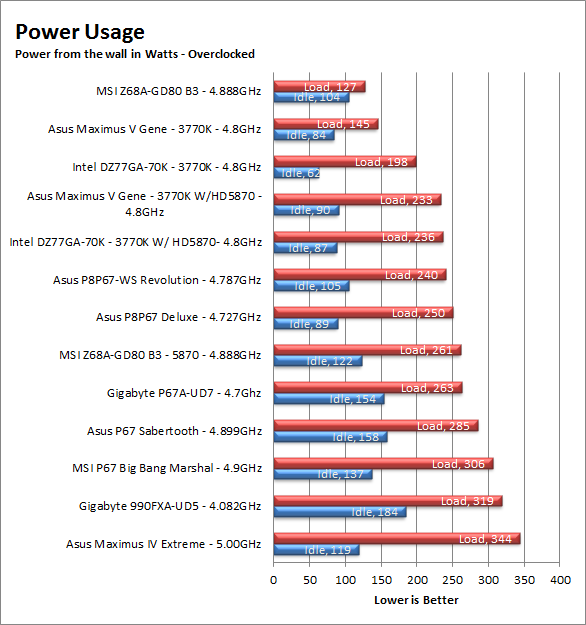
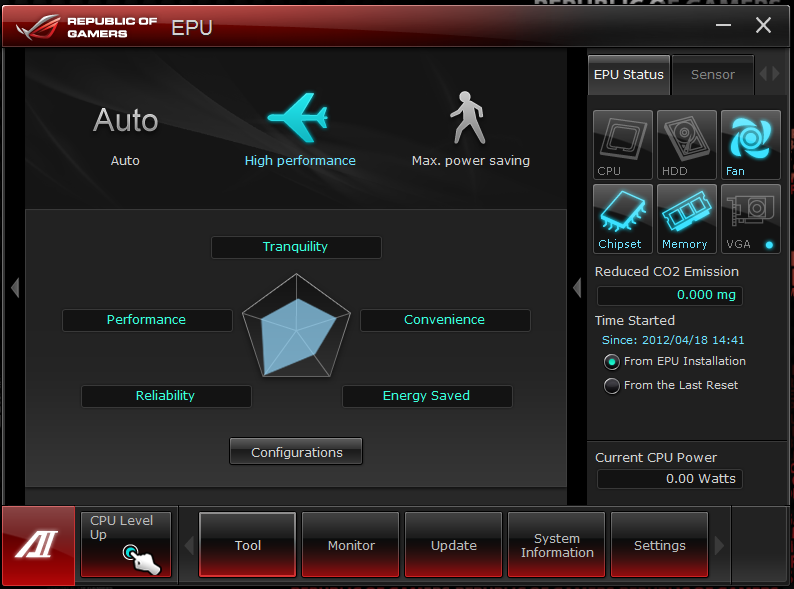
Cooling (Board Level) -
Board level cooling is an important factor in product performance and longevity. Components like the chipset, VRM modules and even capacitors need to be kept relatively cool to prevent failure. As these parts are made of silicon, they have a thermal breakdown threshold; or melting point. At that temperature the actual transistors built into chip will begin to deform and break down. Granted, the threshold is often very high, but you still need to make sure that components stay away from this level of heat for longer product life.
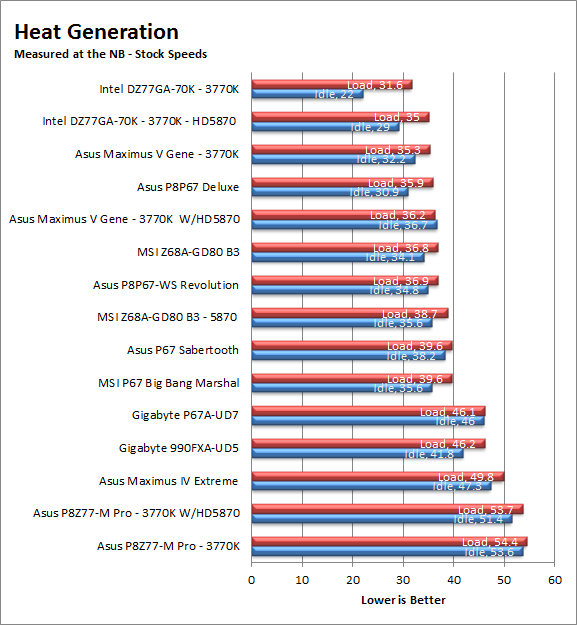
The cooling around the voltage regulation components is good; even when overclocked things were still more than cool enough. However, the Z77 PCH was not all that cool. The Asus Maximus V Gene was the warmest out of the group. This was not expected at all and although we will admit that much of this is from being in an open environment with no air flow it is still not what we expected.
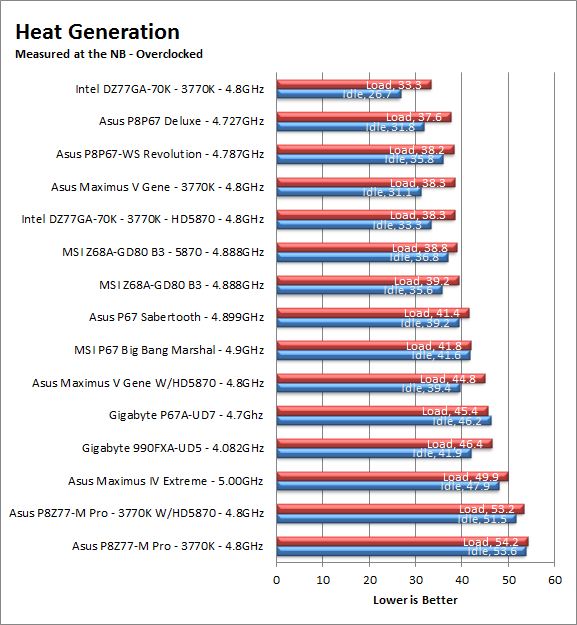
As we talked about under the features section of our review Asus has improved the fan controls available on the Maximus V Gene and all of their other boards. This is the new FanXpert2 software combined with the Q-Fan controls in the BIOS. One of the best features here is the auto tuning feature. Here (as we talked about) you can allow the motherboard to read the fans and determine their low and high settings which are then put into different profiles to help keep things cool. You can also label what fans are plugged into each header to find them quickly. - Update- It appears there was an issue with our Fluke 62 Mini. The internal switch that changes the reading from Farenheit to celcius was not working as it should. we have made the calculations to adjust the temps and you can see the results below. We apologize for this as the reading still showed c in the display. However it is obvious that it was not reading properly when we used a second IR thermometer for verification after user comments
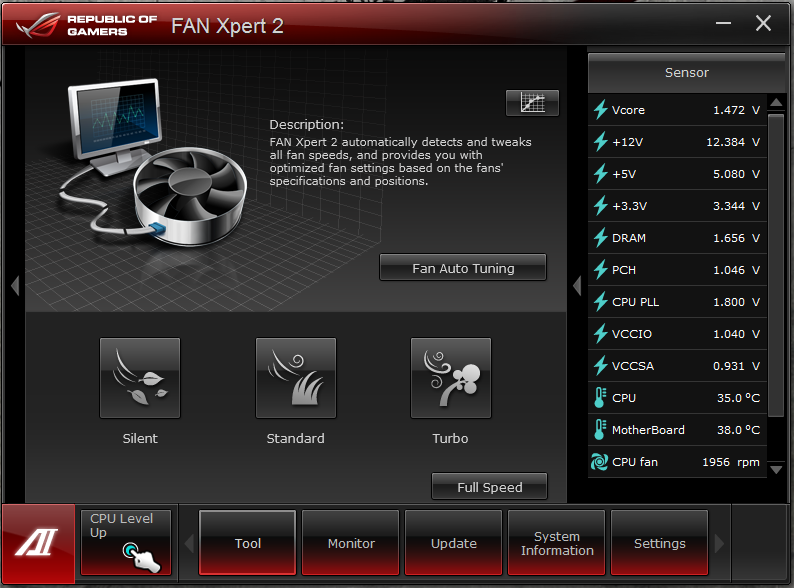 |
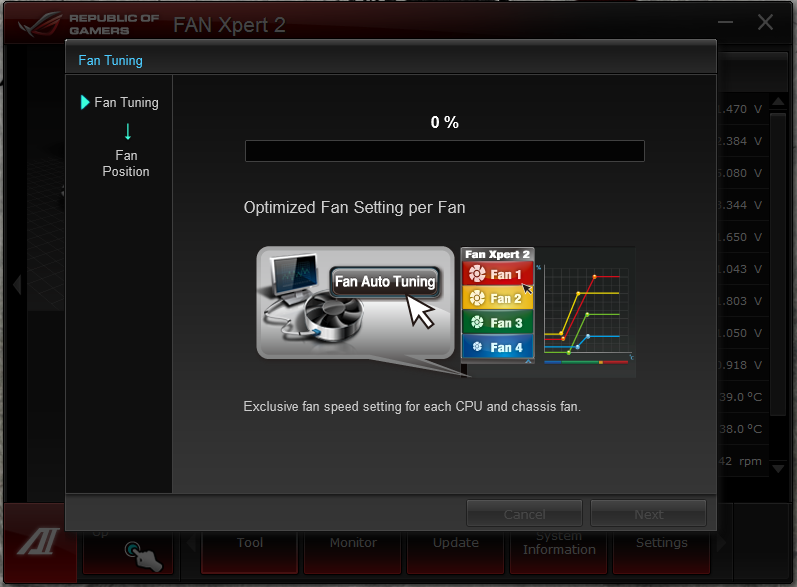 |
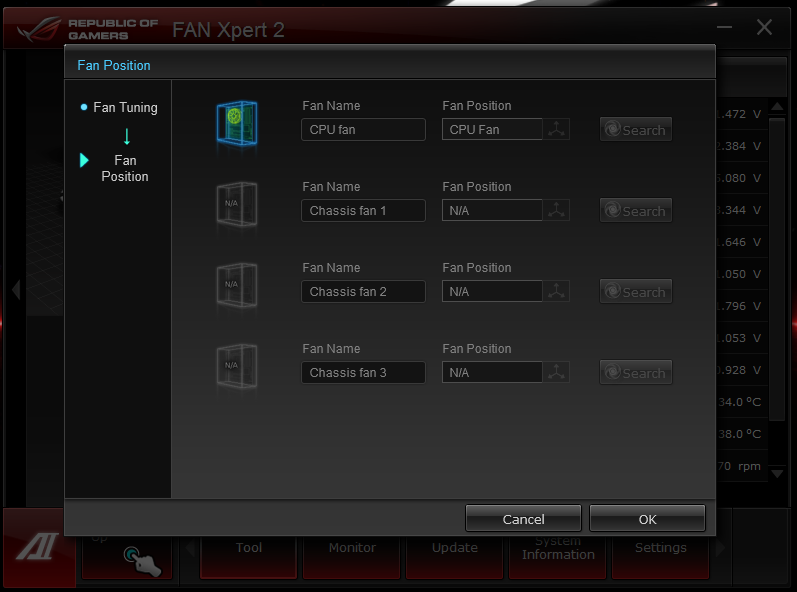 |
Audio -
Audio is highly subjective. What we find pleasing may sound “off” to you. That is always going to the problem with testing audio; results will vary too widely depending on the tastes of the listener. However, there are ways of measuring the audio output with an objective ear. There is also the issue of audio causing performance issues in gaming and video playback. The reason this is a potential source of concern is that all onboard audio CODECs (Compression/Decompression) are CPU controlled. This means that while the audio chip controls the audio levels and effects of the audio the actual work is done on the CPU. Usually this will not be a problem with today’s powerful CPUs. Even the lower and consumer level products can handle high-end audio these days. But again there is the chance that a bad design or software will hinder your system and performance. On the other side the limits of board space, cost, etc will also prevent the level of audio quality you can get from an add-in board. We test all audio parts with three media types, Movie (DVD), MP3 Music, and Gaming. These are pushed to our Tec On model 55 Tube Amp to see if we can detect any signal issues in the reproduction.
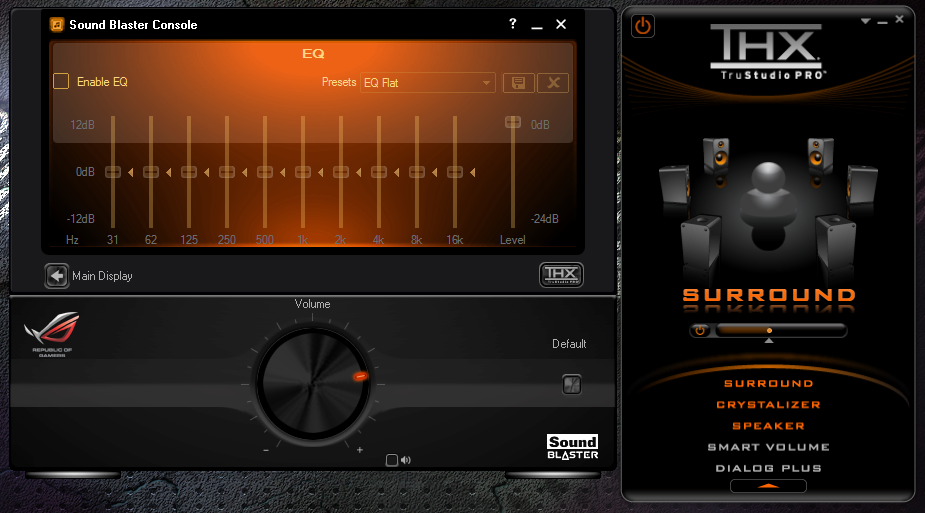 |
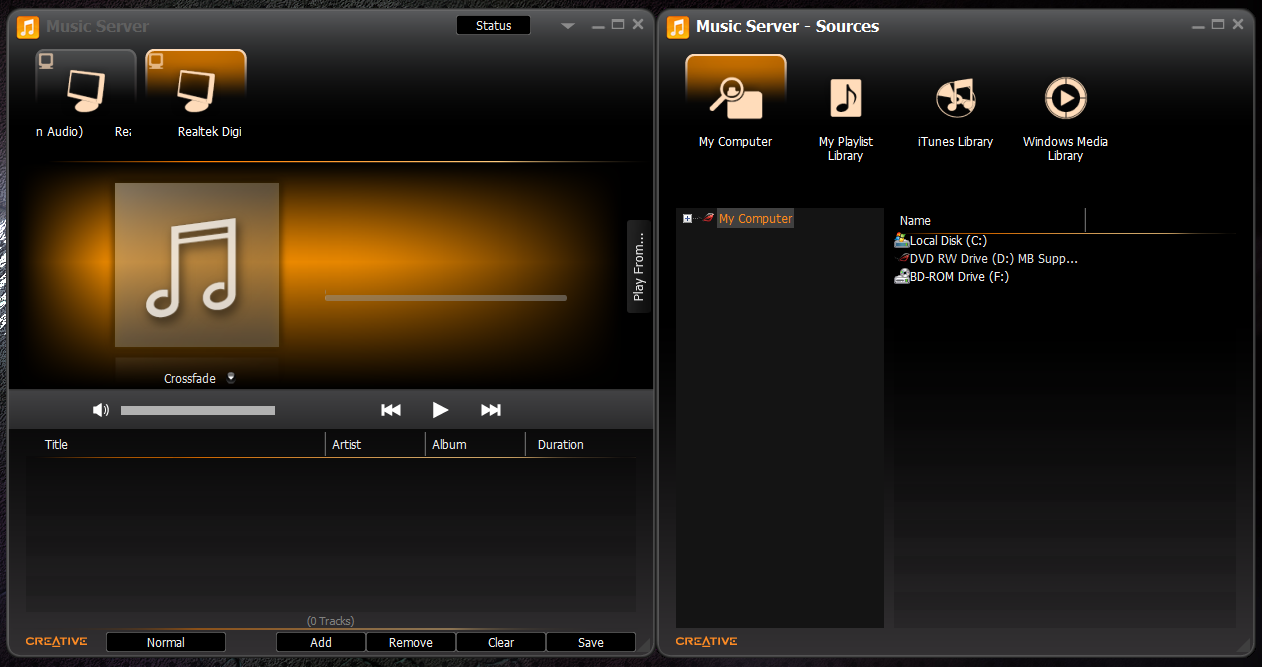 |
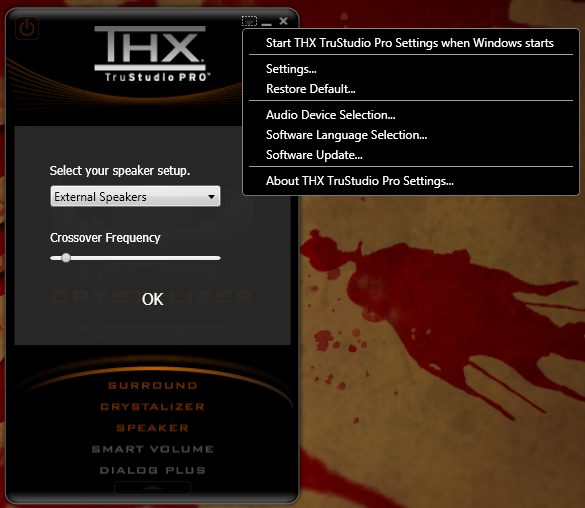
The audio on the Maximus V Gene is the Supreme FX III. This audio CODEC has been improved by a physical separation in the motherboard PCB. To show this Asus has run an LED into this separation which lights up as an indicator. The separation should theoretically help to reduce electronic noise that affects the audio playback signals. On top of this Asus has added in some very nice Creative Labs audio software. As part of the Creative Labs Sound Blaster Console you have options to run THX TruStudio Pro audio enhancements. THX is a studio standard for audio reproduction and when working correctly adds a clean and vibrant boost to any audio. Listening to the audio on the Maximus V Gene we could definitely hear the difference with this on and off.
 |
 |
 |
Networking -
This one is something that is a requirement anymore. If you have a computer, the chances are good (like 99%) that you are also connected to high-speed internet. With this you need a good and solid LAN chip to make sure that your data flows properly out and back.
As you have probably come to expect the Maximus V Gene has an Intel Lan controller. This is coupled with their Game First software. Game First is a software based QoS (quality of service) application that can help to improve your online gaming performance. In our testing it did help to reduce the ping times in Counter Strike, but we did not test it much beyond that because our firewall was having a bigger impact that anything else. This software can still help to prioritize packets traveling in and out of your system, but it is not going to help if your firewall or router has no support for this, or has any type of active scanning or detection routines.

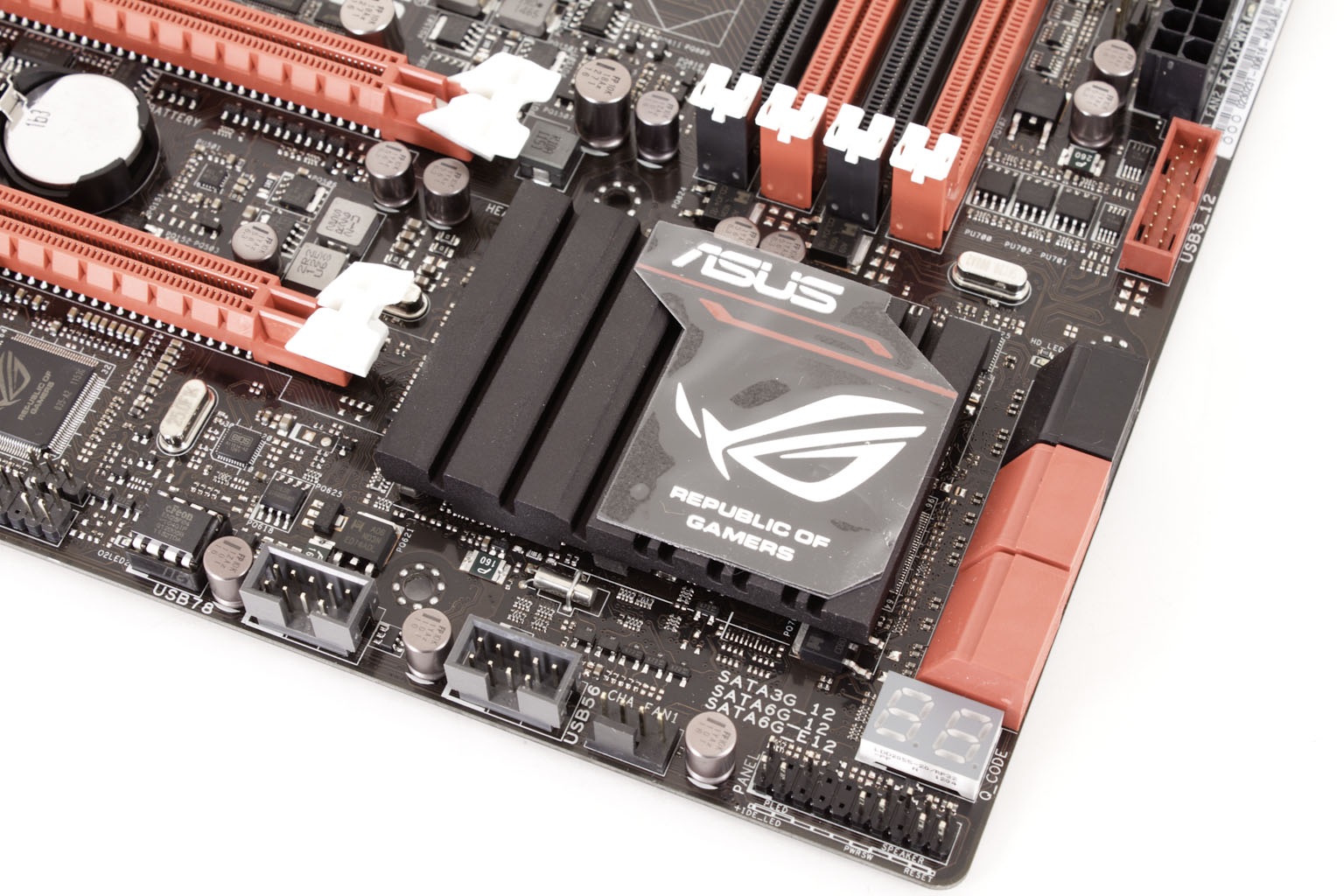 After seeing what new features Asus is bringing to the table with the
After seeing what new features Asus is bringing to the table with the 

